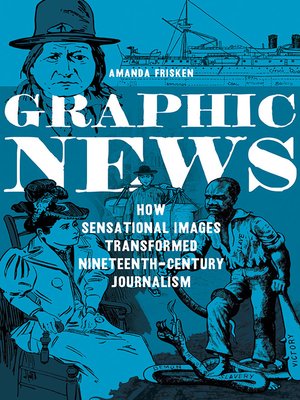Graphic News
ebook ∣ How Sensational Images Transformed Nineteenth-Century Journalism · The History of Media and Communication
By Amanda Frisken

Sign up to save your library
With an OverDrive account, you can save your favorite libraries for at-a-glance information about availability. Find out more about OverDrive accounts.
Find this title in Libby, the library reading app by OverDrive.



Search for a digital library with this title
Title found at these libraries:
| Loading... |
"You furnish the pictures and I'll furnish the war." This famous but apocryphal quote, long attributed to newspaper magnate William Randolph Hearst, encapsulates fears of the lengths to which news companies would go to exploit visual journalism in the late nineteenth century. From 1870 to 1900, newspapers disrupted conventional reporting methods with sensationalized line drawings. A fierce hunger for profits motivated the shift to emotion-driven, visual content. But the new approach, while popular, often targeted, and further marginalized, vulnerable groups. Amanda Frisken examines the ways sensational images of pivotal cultural events—obscenity litigation, anti-Chinese bloodshed, the Ghost Dance, lynching, and domestic violence—changed the public's consumption of the news. Using intersectional analysis, Frisken explores how these newfound visualizations of events during episodes of social and political controversy enabled newspapers and social activists alike to communicate—or challenge—prevailing understandings of racial, class, and gender identities and cultural power.|
Cover
Title Page
Copyright
Contents
Acknowledgments
Introduction: Sensationalism and the Rise of Visual Journalism
1. "We Simply Illustrate": Sensationalizing Crime in the 1870s "Sporting" News
2. "Language More Effective than Words": Opium Den Illustrations and Anti-Chinese Violence
3. "A First-Class Attraction on Any Stage": Dramatizing the Ghost Dance and the Massacre at Wounded Knee
4. "A Song without Words": Anti-Lynching Imagery as Visual Protest in the 1890s Black Pres
5. "Wanted to Save Her Honor": Sensationalizing the Provocation Defense in the Mid-1890s
Epilogue: Legacies of Visual Journalism and the Sensational Style
Notes
Index
Back cover
|
Choice Outstanding Academic Title, 2020
— Choice Outstanding Academic Title, 2020
|
|
Amanda Frisken is a professor of American Studies at SUNY College at Old Westbury. She is the author of Victoria Woodhull's Sexual Revolution: Political Theater and the Popular Press in Nineteenth Century America.






